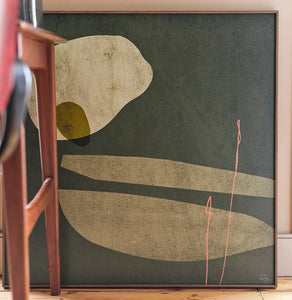Mixing exterior paint with interior paint is not recommended because they are formulated for different purposes. Exterior paint is designed to withstand harsh weather conditions, while interior paint is made for indoor use.
It is essential to use the appropriate type of paint for each specific application to ensure the best results and longevity of the paint job. When painting the exterior of a house, it is crucial to choose a paint that can endure exposure to sunlight, rain, and other outdoor elements.
Interior paint, on the other hand, is formulated to withstand wear and tear from everyday indoor activities. Combining these two types of paint can result in paint failure, compromising the durability and appearance of the paint job. Thus, it is best to stick to using exterior paint for exterior surfaces and interior paint for indoor spaces.

Credit: inmyownstyle.com
Understanding The Difference Between Exterior And Interior Paints
Chemical Composition
Exterior paints are formulated to withstand varying weather conditions and UV exposure.
Interior paints, on the other hand, are designed for low resistance to weather elements.
Application Differences
Exterior paints are tough to endure elements, while interior paints focus more on aesthetics.
Mixing these two types can compromise both durability and appearance of the paint.

Credit: www.pinterest.com
Consequences Of Mixing Exterior And Interior Paints
Mixing exterior and interior paints can lead to undesirable consequences. While exterior paints are designed to withstand weather elements, interior paints are formulated for indoor use. Combining them can result in poor adhesion, wear and tear, and a shorter lifespan for the paint job.
Always use the appropriate paint for each surface to ensure longevity and durability.
Combining exterior and interior paints can result in several negative outcomes. Let’s explore the key consequences below.
Impact On Longevity
Mixing different types of paints can diminish the durability of the final finish, leading to premature deterioration. This can result in costly repairs.
Aesthetics And Performance
Mismatched paints may affect the overall look of your space, causing inconsistent color or texture. Additionally, performance can be compromised, leading to chipping, fading, or flaking sooner than expected.
Factors To Consider Before Mixing Exterior And Interior Paints
When considering mixing exterior and interior paints, it’s crucial to take several factors into account to ensure a successful outcome. Here are the key aspects to consider before blending these types of paints:
Surface Type
Mixing exterior and interior paints is heavily influenced by the surface type. While interior paint is formulated for dry, indoor surfaces, exterior paint is designed to withstand outdoor conditions like moisture and UV exposure. Therefore, before mixing, it’s important to assess the surface’s location and its exposure to weather elements.
Weather Exposure
Considering the weather conditions the painted surface will endure is essential when contemplating the mixture of exterior and interior paints. If the area is exposed to constant sunlight, rain, or extreme temperatures, the paint should be able to endure these conditions without degrading.
Color And Finish
Color and finish are crucial factors to mull over when blending exterior and interior paints. Exterior paints tend to have different additives that provide better UV protection and durability, while interior paints prioritize scrubbability and stain resistance. Therefore, it’s important to choose colors and finishes that will retain their appearance and performance in their intended environment.

Credit: swyfthome.com
Tips For Mixing Exterior And Interior Paints
When it comes to painting your home, it’s important to use the right type of paint for each area. While exterior and interior paints may seem similar, they have different formulations that make them suitable for their specific purpose. However, there may be instances where you want to mix exterior and interior paints to achieve a particular color or finish. Here are some useful tips to consider:
Consulting A Professional
If you’re unsure about mixing exterior and interior paints, it’s always a good idea to consult a professional. Paint store experts or professional painters can provide valuable advice on whether it’s safe and appropriate to mix these two types of paint. They have the necessary knowledge and experience to guide you in choosing the right products and achieving the desired results.
Test Patching
Prior to mixing and applying the paints on a larger scale, it’s essential to perform a test patch. Choose an inconspicuous area, such as a small corner or an interior wall, to experiment with the paint mixture. This allows you to assess the color, texture, and finish of the mixed paint before committing to it for your entire project. Remember to let the test patch dry completely to get an accurate preview of the final outcome.
Compatibility Testing
Before you start mixing exterior and interior paints, it’s crucial to ensure their compatibility. Some paint formulations may not work well together, leading to a compromised finish or even paint failure. To avoid any issues, conduct a compatibility test by mixing small amounts of the two paints and applying them to a test surface. Examine the results to determine if the paints blend seamlessly without any signs of separation, clumping, or uneven drying.
By following these tips, you can enhance your chances of successfully mixing exterior and interior paints for your home improvement project. Remember to consult a professional, conduct test patching, and perform compatibility testing to achieve the desired color and finish while maintaining the durability and longevity of your painted surfaces.
Using Mixed Paint For Interior And Exterior Projects
Using Mixed Paint for Interior and Exterior Projects
When it comes to painting, many homeowners wonder if they can use the same paint for both their interior and exterior projects. The answer is not as straightforward as one might think. While it is possible to mix exterior paint with interior paint, there are a few important considerations to keep in mind to ensure the best results. In this article, we will explore the applicability and precautions of using mixed paint for both interior and exterior painting projects.
Applicability
Before deciding to mix exterior and interior paint, it’s important to consider the applicability for each type of project. Exterior paint is specially formulated to withstand harsh weather conditions, UV rays, and moisture, making it durable and long-lasting. On the other hand, interior paint is designed for indoor environments, offering advantages such as washability and low odor. So, while it might be possible to mix these two paints, it’s crucial to evaluate whether the mixed paint will be suitable for the specific conditions it will be exposed to.
Precautions
When using mixed paint for interior and exterior projects, it’s vital to take certain precautions to ensure optimal results. Here are some key precautions to keep in mind:
- Color and Finish Consistency: Mixing exterior and interior paints can result in variations in color and finish. It’s essential to thoroughly mix the paint to achieve a consistent color and finish throughout the project.
- Adhesion: Exterior paints generally have a stronger adhesion to surfaces due to their formulation. When mixing exterior paint with interior paint, it’s important to ensure that the paint will adhere well to the specific surfaces, particularly in exterior projects where durability is crucial.
- Longevity: Exterior paints are designed to withstand the test of time, while interior paints may not have the same longevity. Consider the lifespan required for your project and whether a mixed paint will be able to provide the necessary durability.
- Warranty: If you are using paint from a specific brand, check the warranty specifications to ensure that it covers the use of mixed paint for both interior and exterior projects. Some warranties may be voided if mixed paint is used.
By following these precautions, you can minimize the risks associated with using mixed paint for both interior and exterior projects. It’s always recommended to consult with a professional painter or paint manufacturer for specific guidance based on your project requirements.
Frequently Asked Questions On Can You Mix Exterior Paint With Interior Paint
Can Exterior Paint Be Used For Interior Walls?
Yes, exterior paint can be used for interior walls. However, it is important to consider that exterior paints have different properties. They are designed to withstand harsh weather conditions and may contain compounds that can be harmful indoors. It is recommended to use interior paint for interior walls for better durability and indoor air quality.
What Are The Differences Between Exterior Paint And Interior Paint?
The main differences between exterior paint and interior paint are the composition and the additives used. Exterior paint is formulated to resist fading, cracking, and mildew growth due to exposure to sunlight and weather. Interior paint, on the other hand, is designed for easy cleaning, durability, and low odor.
Can You Mix Exterior Paint With Interior Paint?
It is not recommended to mix exterior paint with interior paint. Exterior paint is formulated differently to withstand outdoor elements, while interior paint is created for indoor use. Mixing them may affect the durability, adhesion, and overall finish of the paint.
It is best to use the appropriate type of paint for each specific application.
Conclusion
It’s essential to remember the distinct properties of interior and exterior paints. Mixing them may compromise the durability and finish quality of your paint job. To ensure a successful and long-lasting result, always use the appropriate paint for each specific surface.
Consider consulting a professional for expert advice on paint selection.


